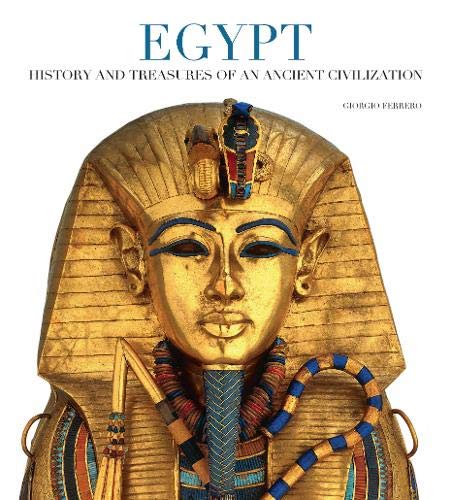Egypt: History and Treasures of an Ancient Civilization | Giorgio Ferrero

Detalii Egypt: History and Treasures of
Egypt: History and Treasures of - Disponibil la carturesti.ro
Pe YEO găsești Egypt: History and Treasures of de la White Star, în categoria Carte straina.
Indiferent de nevoile tale, Egypt: History and Treasures of an Ancient Civilization | Giorgio Ferrero din categoria Carte straina îți poate aduce un echilibru perfect între calitate și preț, cu avantaje practice și moderne.
Caracteristici și Avantaje ale produsului Egypt: History and Treasures of
- Departament: gaming-carti-birotica
- Ideal pentru pasionații de jocuri, birotică și distracție online.
Preț: 122 Lei
Caracteristicile produsului Egypt: History and Treasures of
- Brand: White Star
- Categoria: Carte straina
- Magazin: carturesti.ro
- Ultima actualizare: 11-11-2024 01:46:56
Comandă Egypt: History and Treasures of Online, Simplu și Rapid
Prin intermediul platformei YEO, poți comanda Egypt: History and Treasures of de la carturesti.ro rapid și în siguranță. Bucură-te de o experiență de cumpărături online optimizată și descoperă cele mai bune oferte actualizate constant.
Descriere magazin:
This title presents a civilization that never ceases to amaze scholars, enthusiasts and the general public by providing us with exceptional treasures. The magnificent monuments built in ancient Egypt are world famous, just as the general public knows the names of the most famous pharaohs in the long history of Egyptian civilization. Publications, documentaries, magazines and films continue to dwell on the theme of ancient Egypt, a sign of continuing interest in the story of this great culture. But it was only in 1822, when the ingenious intuition of the French scholar Jean-Francois Champollion paved the way for the first decipherment of hieroglyphs, that the thousands of inscriptions on the ancient Egyptian monuments, steles, statues and tombs could once again bear witness to the life, beliefs and political and economic events of this ancient population that had lived along the banks of the Nile and had created the most long-lived civilization in the history of humanity. Since the late 19th century there has been an uninterrupted series of archaeological discoveries that have greatly increased our knowledge of the history and customs of this great civilization. There is no doubt that the most famous and sensational event in this regard was the tomb of the pharaoh Tutankhamun, which Howard Carter found almost intact in 1922. This exceptional discovery triggered a new wave of enthusiasm about Egypt that spread in Europe and United States. Many 20th-century and contemporary artists were inspired and continue to be inspired by the iconographic motifs of Egyptian art. Archaeological research is still underway and, thanks to state-of-the-art techniques and technology, Egyptologists can clarify new aspects of the history of this great civilization.

Produse asemănătoare

Moses and Akhenaten: The Secret History of Egypt at the Time of the Exodus, Paperback/Ahmed Osman
![]() elefant.ro
elefant.ro
Actualizat in 21/12/2024
107.99 Lei

Egypt: History and Treasures of an Ancient Civilization, Paperback/Giorgio Ferrero
![]() elefant.ro
elefant.ro
Actualizat in 21/12/2024
115.99 Lei

The Pyramids (New and Revised): The Archaeology and History of Egypt\'s Iconic Monuments, Hardcover/Miroslav Verner
![]() elefant.ro
elefant.ro
Actualizat in 21/12/2024
437.99 Lei

The Cairo Genizah and the Age of Discovery in Egypt. The History and Provenance of a Jewish Archive, Paperback/***
![]() elefant.ro
elefant.ro
Actualizat in 21/12/2024
164.99 Lei

A Question of History: What happened to the pharaoh\'s brain? And other questions about ancient Egypt, Paperback/Tim Cooke
![]() elefant.ro
elefant.ro
Actualizat in 21/12/2024
66.99 Lei
Produse marca White Star

Harley Davidson: Engines and Evolution, Hardback/Christopher P Baker
![]() elefant.ro
elefant.ro
Actualizat in 21/12/2024
183.99 Lei

Me and My Baby Rattle. My First Three Years Record Book, Hardback/***
![]() elefant.ro
elefant.ro
Actualizat in 21/12/2024
99.99 Lei

My First Book of Woodland Animals: Montessori a World of Achievements/Agnese Baruzzi
![]() elefant.ro
elefant.ro
Actualizat in 21/12/2024
37.45 Lei



